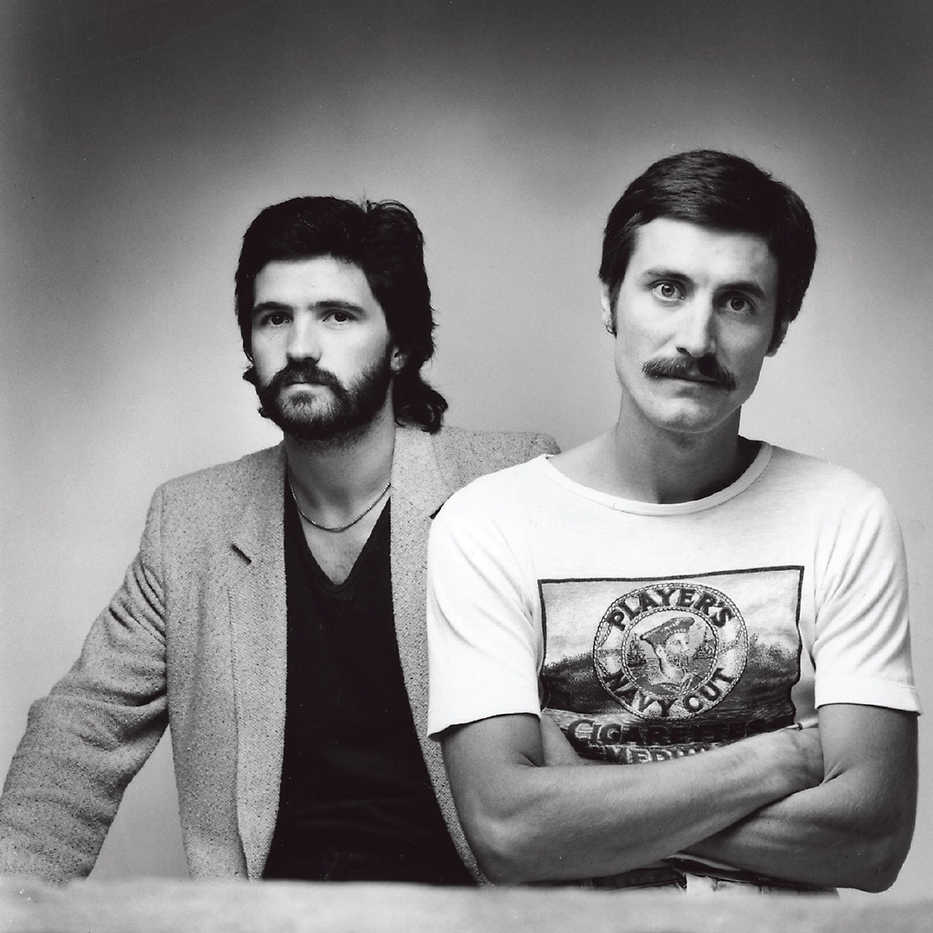
What were you trying to achieve with these ads, and how did they come about?
There is definitely one simple answer to that. Because we were both recently from the UK, we were interested in the fact that you could buy space in a paper that you knew virtually everybody in the country would be reading, so you’d be pretty sure you’d be hitting a target audience somewhere along the line because they’d all be part of it. So that’s why we did it, because to us, coming from elsewhere it was so cheap. I have no idea what they cost us, 400 bucks a time or something, which seems like nothing now. It seemed a perfectly normal thing to do, to try and drum up some business in the business pages. Really were a couple of vain bastards, and we wanted to get our picture in the paper.
Obviously in all of them we were trying to speak, well I’m not sure, whether we were trying to speak to advertising agents or straight to clients, I think with that paper we were hoping to cover everything.
Were the ads done early on to establish your business?
They were fairly early on, but not straight away. This was for a couple of reasons, we wouldn’t have had the money, or the samples to do it, and we probably didn’t know how difficult it was to get work in the market. All those things lead to having to do something about it, and I guess there was something in there about having control over it ourselves for a change, instead of working with people who wanted to make it worse and not better.
Its funny because Gail [Mason] looked at them and the first thing she said was, it has terrible typography, which is kind of interesting. In retrospect, perhaps so, but at the time they weren’t so bad, if you looked at the ads of the day they probably weren’t too bad in comparison.
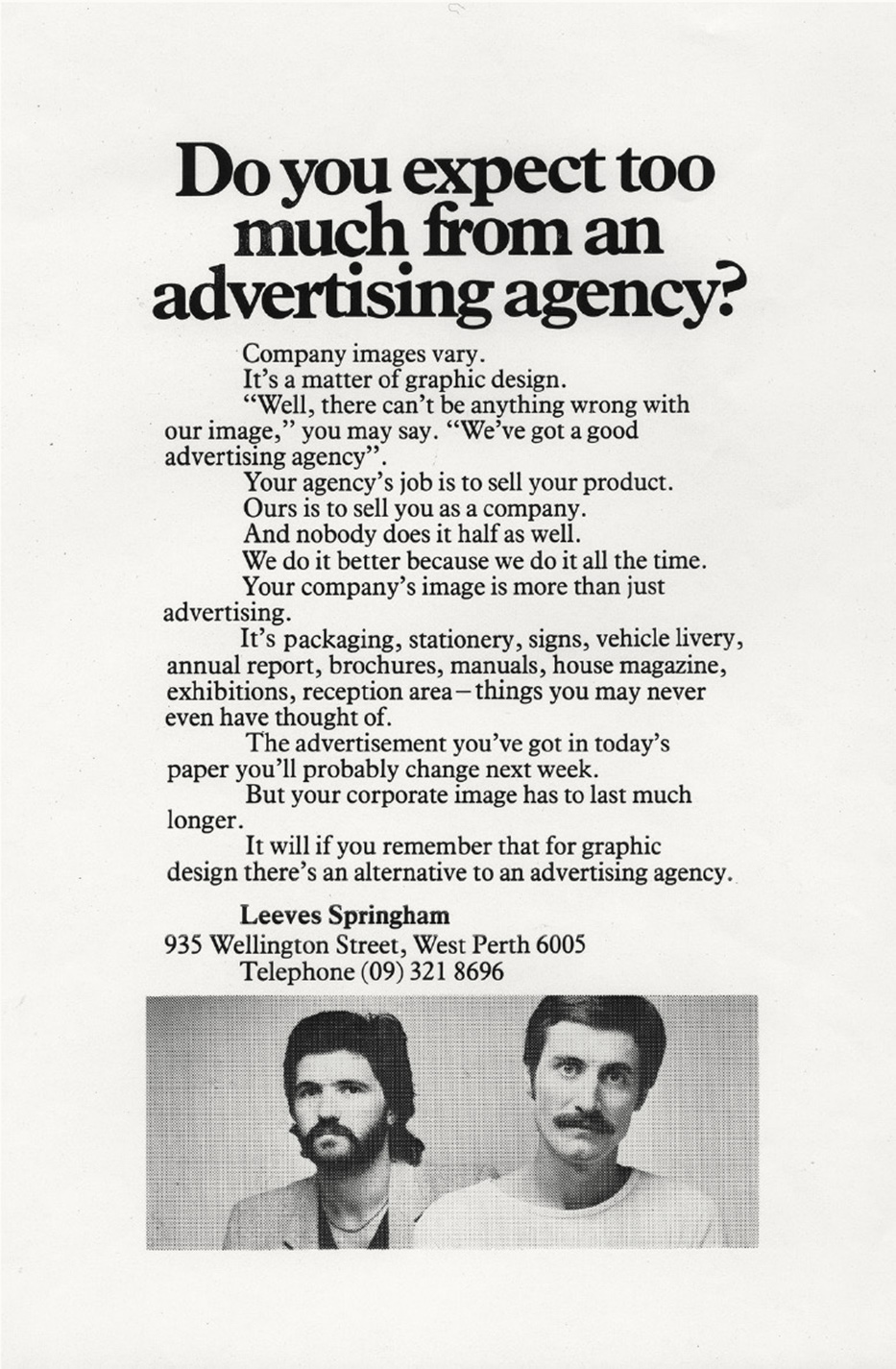
Was it innovative to do this?
Not necessarily, although it might have seemed so here. It was a version of European advertising, that kind of thing. I’m not sure in those days how much we would have looked at overseas advertising once we were here, because there weren’t bookshops full of stuff, it was more if you bought an interesting publication, everyone gathered round to have a look.
What was the Perth design scene like at the time, were you trying to educate with these ads?
Yeah we were, because it was much worse here than we thought it was. Nobody was really interested in much that was good, and we wanted to try and drum up a longer term client, instead of a one off job business relationship. We thought it might draw some people out of the woodwork and generate some interest, but it didn’t. I don’t think it made any difference at all. It confirmed that every job you do will be a one off or a couple of bits and pieces; there was no real corporate approach to the work, and we were looking for a corporate approach, as most of the ads explore. I don’t think many people understood that approach at all.
We were as far as we know, the first design company to call ourselves that. In the sense that we weren’t freelancers, and there were two of us, and we were a partnership. It wasn’t one person who would be freelancing with a couple of people to do the work. We set it up so you come into the place like a business, a little studio, rather than a freelance office, or a freelance room, and we tried to make that be more the case. After we worked all that time to get an office in West Perth, we invited Les Mason (Influential Australian Graphic Designer) to come and have a look, and the first thing he said was ‘what are you wasting money on this for?’ Because we got a premises in new building, on the lower floor, with big glass windows that faced the street. He said ‘What are you wasting money on this for, nobody cares about this kind of stuff’. These ads were part of that process, to be professional.
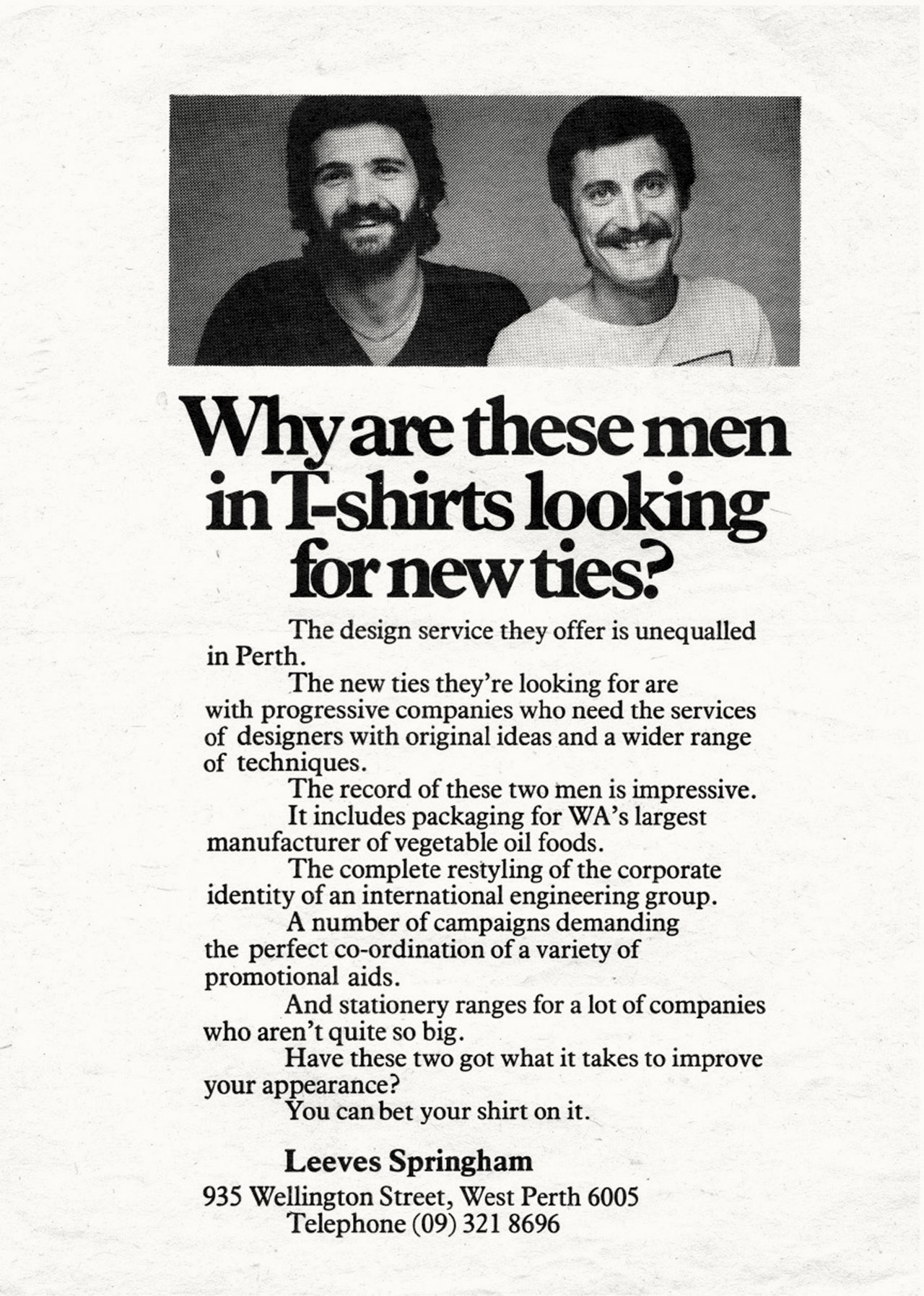
Did you get much of a response from other designers, was there much discussion surrounding it?
Not for a while because I don’t think AGDA was around at that time. The first organisation that sought to deal collectively with designers, was just 7 of us that got together to try and form some kind of group. AGDA formed a year or so later, and they invited us to join them. In terms of conversation with others, you usually ran into them at some sort of function, but there weren’t really many things that actually bought us all together until AGDA. Usually the general thing at the time was that nobody discussed anything about business, they were all afraid that if you said anything you would be finding about other clients. You couldn’t blame anybody for doing that, as there wasn’t much work around at the time. We were out on our own, then we went and did some work for an advertising agency.
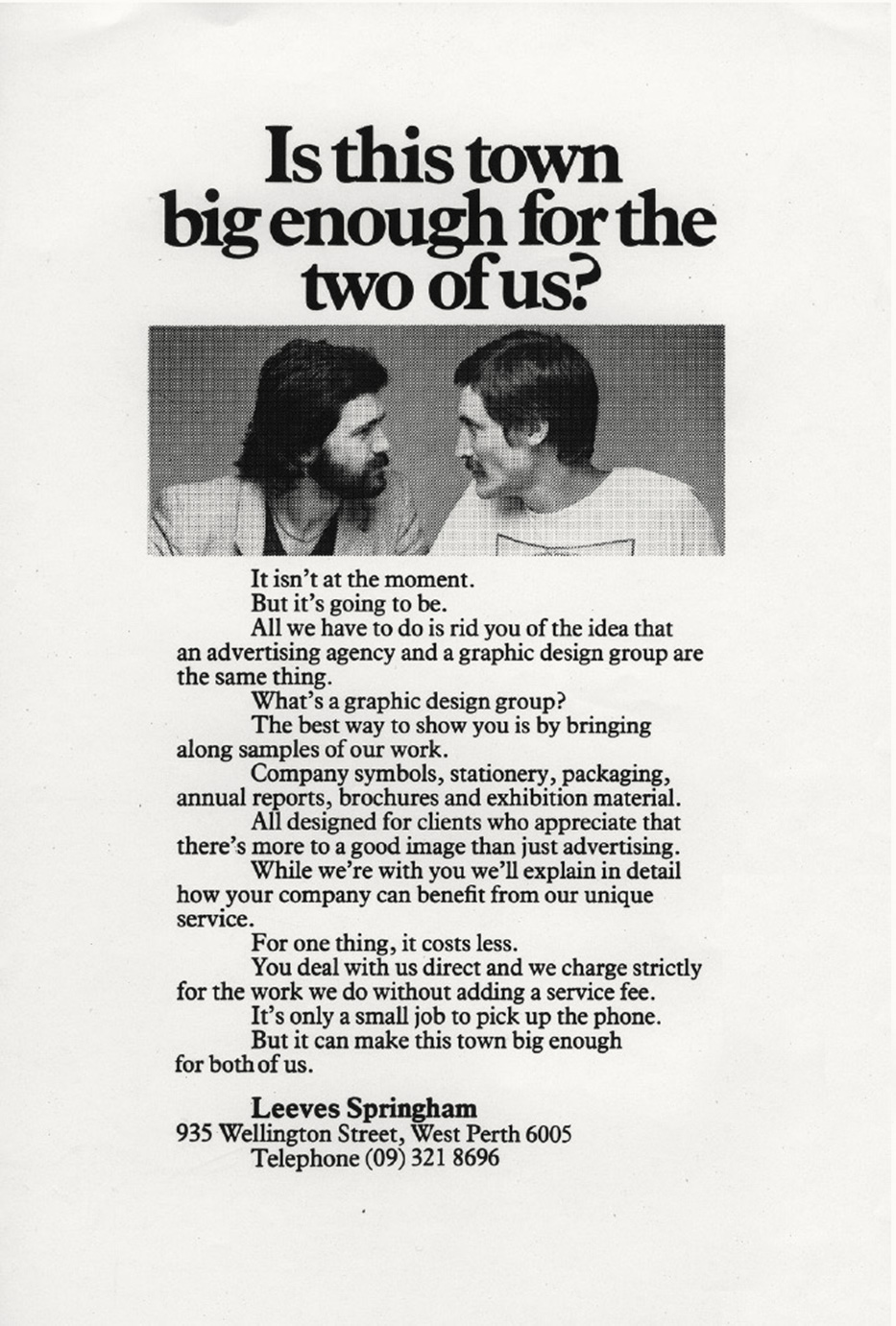
Was that where you and Russel Springham met?
No, we met at a very old house where QV1 is now, on the corner of Milligan and St Georges Tce, one of the only ones left then. There was a guy who was working with all the agencies, and he had employed me, but Russ wasn’t there then. I worked for him, then I went to art school for 2 years, and then he employed me again after that. By this time Russel had taken up a room in there. After a while we decided it might be worth giving it a go somewhere and the rest would have been history, if it had made any difference, but the rest is not history, it’s lost in the fog of meaningless past. Ray and Russel with Les Mason at all. The whole situation was laughable really in that sense. So we had to entertain ourselves by playing Ian Dury to feel better, then punk started to happen and it was more entertaining than the work business. I still think there are enormous problems with trying to get anything worthwhile out of a client here, they don’t know anything about design or aesthetics. I’m not knocking them saying ‘aren’t they dumb’, its just saying ‘how would they?’, there’s not really any conversation about it, and nobody sees any particular need for it. And everybody will say, ‘that’s the usual pessimistic attitude’, but you’ve got room to be pessimistic after 30 odd years, and I can’t see any big improvements at the moment.
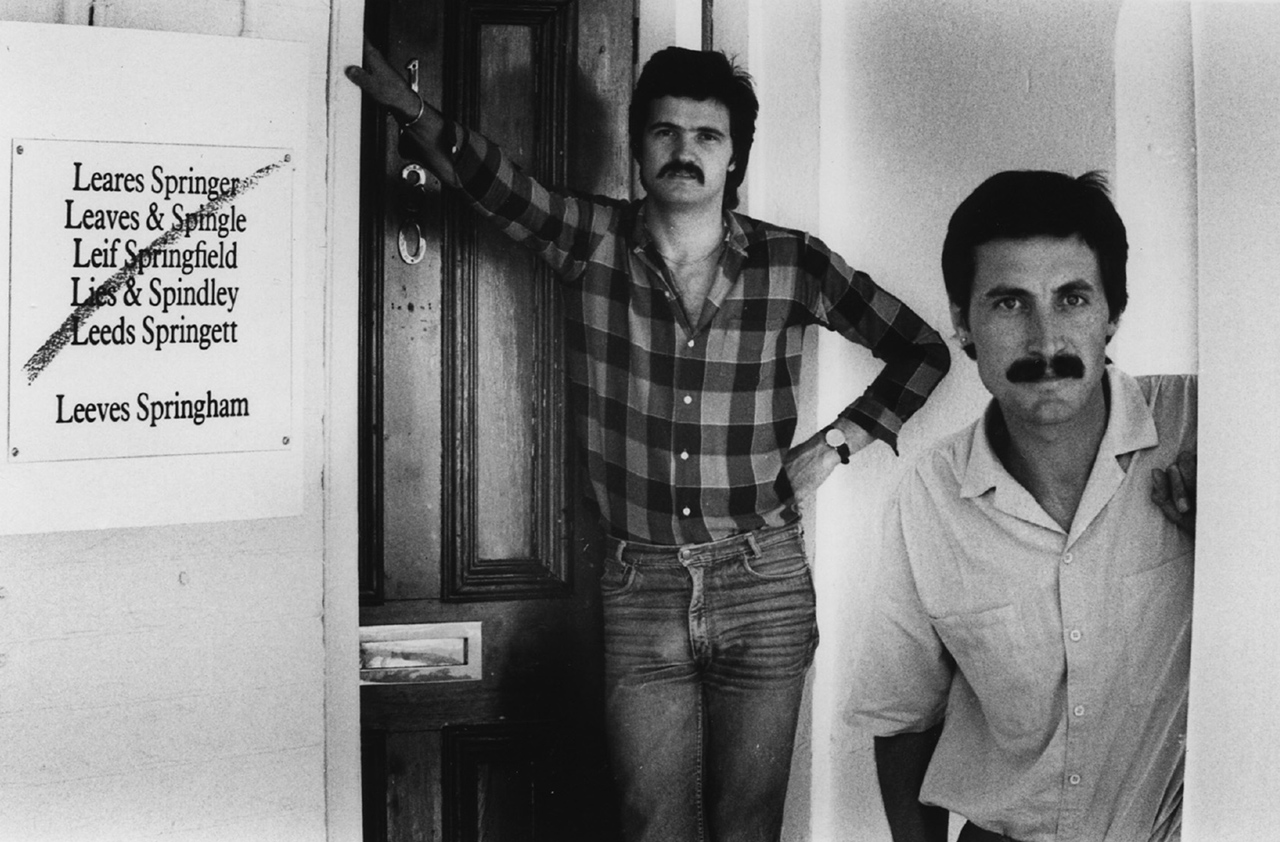
Can you tell us about the sign with the spelling mistakes, was this your identity?
That came from the mail we got from various places, usually not from clients, it was usually bills, just bills coming from various places. They are all genuine ones that came through addressed with that as the company name, that maybe displays the difficulty you had getting any kind of identity going anywhere, that shows you what you get. And somehow it didn’t come across quite as fun as it was intended.
Do you think you would do something like that today?
It would cost a lot more money now, to pay for a newspaper ad would be probably harder I think, and with computers and websites and everything else, you would probably be able to find a better way of doing this sort of thing, so no, I don’t know if I’d advise anybody to do it anymore, I don’t think so. Graphic Designers don’t usually advertise either.
I still don’t, even these days, I wouldn’t be confident about how much work you can pull in from something like that. You are better off to have local knowledge, and be able to speak to people in a way they are OK with, and not push them in any particular direction I think.
You know they were just a simple attempt to draw somebody in to some kind of reaction or conversation. They’re not really designed to be that hard hitting, even if they came across that way. The comedy aspect was meant to say we just want to have a chat with you, and wasn’t a hardcore attempt to draw business from you. Is there any kind of conversation out there at all, was part of it. We wanted to be professionals.
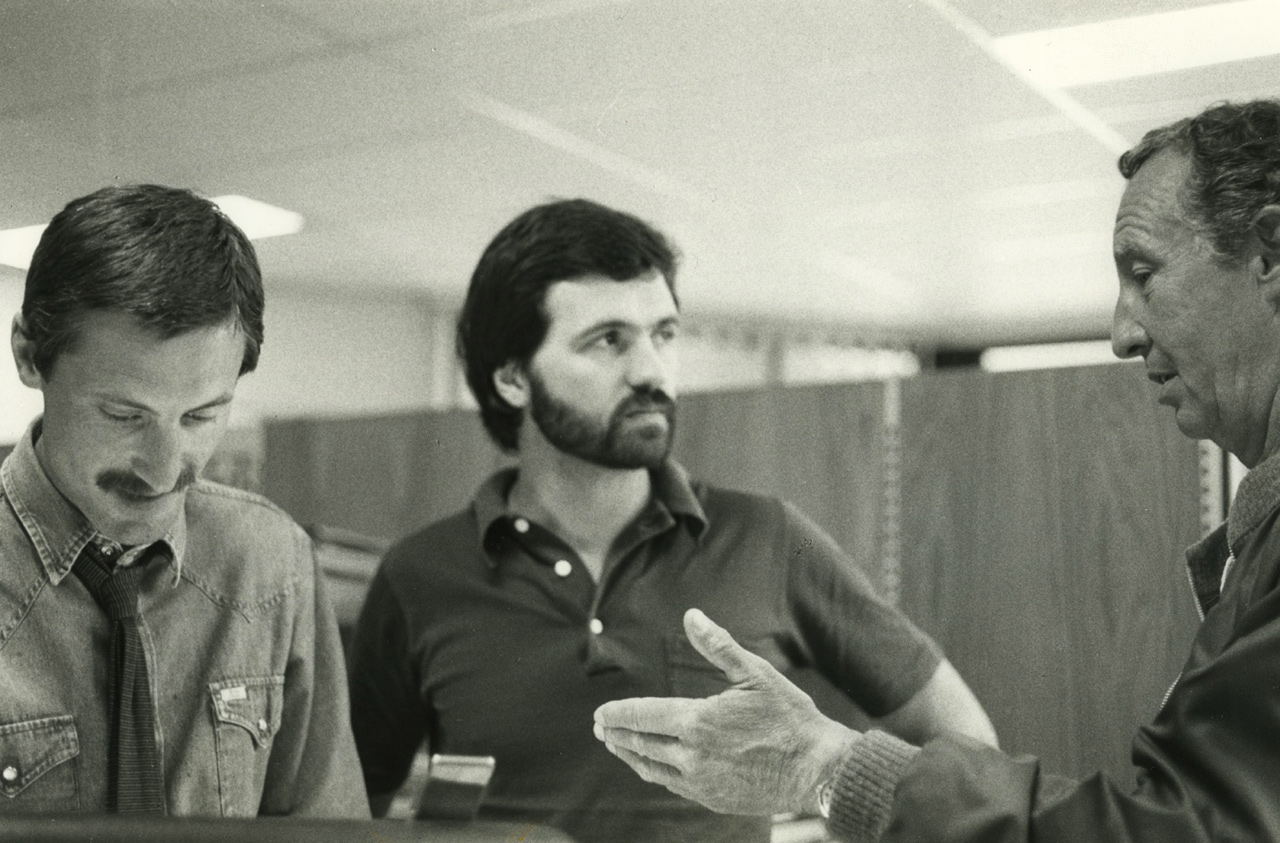
Did you get much work from these?
I don’t think so, none. Ogilvy & Mather called and said it was great, but didn’t give us anything. They really wanted to give us some work. We put an ad in the yellow pages, which at the time was relatively unusual, probably because the others already knew it was a bloody waste of time, and because it wasn’t cheap either. We did it for two years, and got one call out of it from a plumber, and that never turned into anything in Domus with your new ideas about design. It was very basic, and so were we.
We were naively thinking these ads might be able to do something about it, we were trying to show you can step up here. I don’t think we sat down and said ‘lets show them’. We were kind of doing that, but it wasn’t enough to say we’ll expect to happen over night, we just thought why cant we do that? Why not? Lets say we are brave enough to do it, why don’t some other designers or advertising agents or clients look at what we are doing, and think they could do it as well? We were young guys, probably around mid to late 20s, and there was a lot of enthusiasm, but also belief that you could make changes with it, but you were essentially farting against thunder. Somebody said you cant expect to get any work out of body language like that. We said that’s just attitude. If it gives anyone a laugh these days, that’s probably the only thing that might have been worth it. It was worth it to us at the time, and we felt good doing it.
This article was first published in The Weather Ring, a journal that explores architecture and design in Western Australia. Thanks to Clare Wohlnick and Andrew Murray.